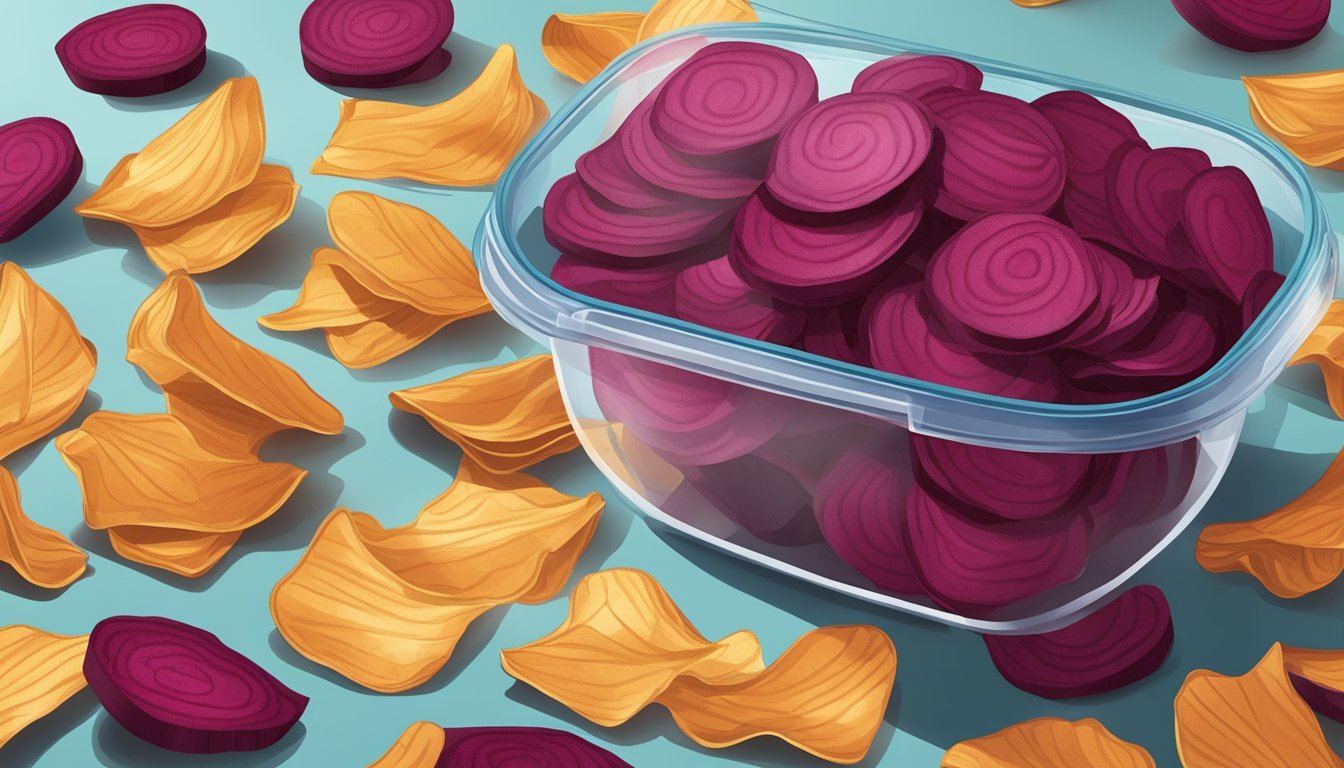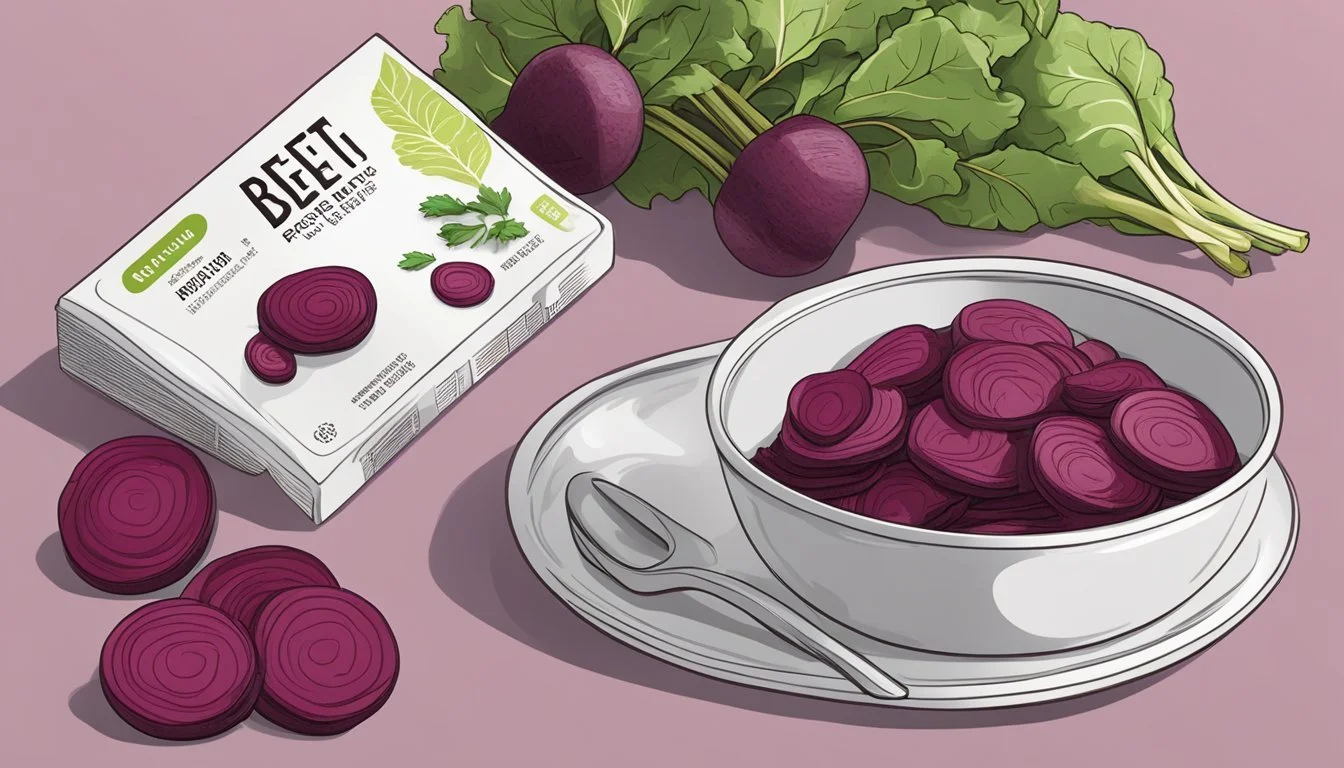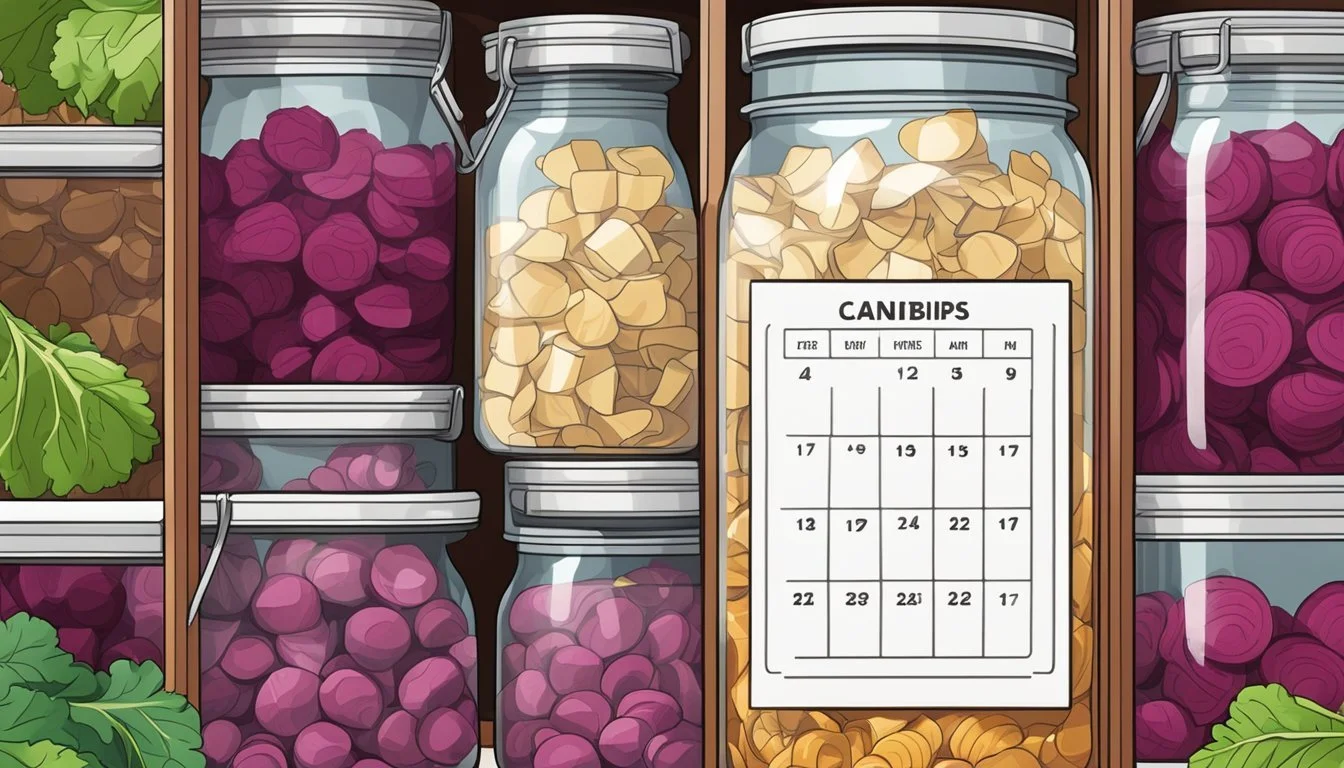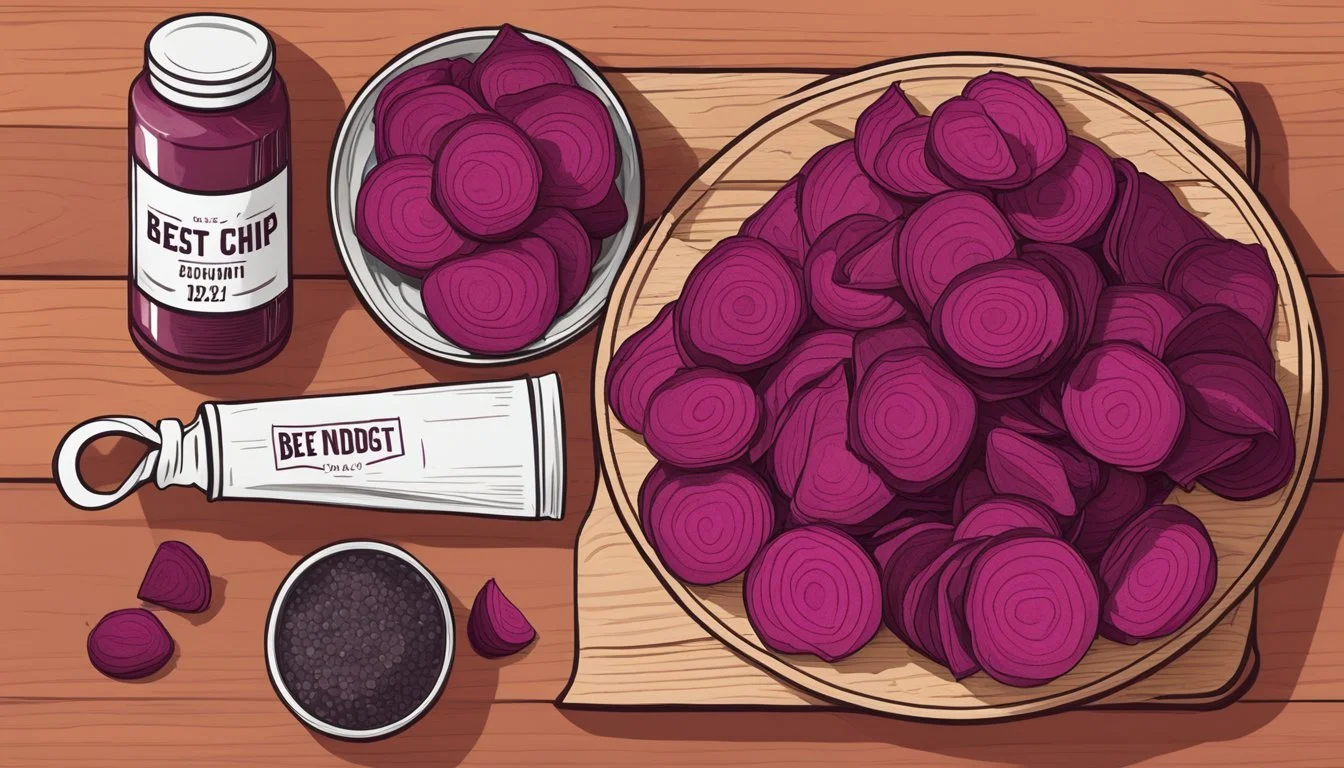How Long Do Beet Chips Last?
Shelf Life and Storage Tips
Beet chips are a popular snack choice for those looking for healthier alternatives to traditional potato chips. Often praised for their earthy flavor and crispy texture, beet chips not only provide a satisfying crunch but are also packed with nutrients. They are a good source of dietary fiber, potassium, and various vitamins, making them a smart snack option for anyone conscious about their dietary intake.
When it comes to shelf life, the longevity of beet chips is influenced by several factors including how they were prepared, how they are stored, and the ingredients used to make them. Proper storage is crucial in maintaining their freshness and crispiness. Typically, homemade beet chips can last for a week when kept in an airtight container in a cool, dry place.
Store-bought beet chips might come with a longer shelf life due to the preservatives used in their production. However, regardless of whether they are homemade or purchased, it's important to keep them away from moisture and light to prevent spoilage and to retain their quality as a nutritious snack. Checking the manufacturer's recommendations on the packaging can provide specific guidance on how long they can be consumed safely.
Benefits of Beet Chips
Beet chips offer a powerhouse of nutrients and a healthier alternative to traditional snacking options. With their rich content and low-calorie profile, they cater to health-conscious individuals looking for tasty yet nutritious snacks (What wine goes well with snacks?).
Nutritional Value
Beet chips are an excellent source of dietary fiber, which is essential for digestive health. They contain important minerals like potassium, which aids in maintaining proper heart function, and iron, which is crucial for transporting oxygen in the blood. The nutritional benefit of beets (how long do beets last?) extends to a variety of vitamins that support overall health.
Calories: Low
Sodium: Minimal (especially when homemade)
Carbohydrates: Present, primarily in the form of natural sugars
Sugar: Naturally occurring
Protein: Moderate
Unsaturated Fat: Minimal; beets are naturally low in fat
Beet chips are densely packed with nutrition in every crunchy bite.
Healthy Snack Alternative
As a snack, beet chips are a healthy substitute for foods that are typically high in saturated fats and sodium. Their calorie count is favorably low, making them a guilt-free option for snacking.
A healthier choice with fewer calories than fried snacks
Rich in nutrition, providing more than just empty calories
Incorporating beet chips into one's diet introduces a satisfying crunch without the added health risks associated with highly processed snacks.
Preparation Basics
Before making beet chips, one must assemble the right tools, select quality beets, and follow a precise preparation method. Each step is crucial to ensure the beet chips are crispy and durable for storage.
Required Tools
To begin, one will need a sharp mandoline slicer to achieve uniformly thin beet slices, which is essential for even baking and crispiness. Alongside, at least two baking sheets should be lined with parchment paper.
Mandoline slicer
Baking sheets
Parchment paper
Mixing bowl
Cutting board
Vegetable brush
Knife or peeler
Beet Selection
Selecting the right beets impacts the final taste and texture. One should look for:
Medium-sized, firm beets
Smooth, unbruised skin
Vibrant color
Before slicing, beets must be scrubbed clean with a veggie brush, and tops and roots removed.
Preparation Method
For the preparation, the cleaned beets are peeled and sliced into paper-thin rounds using a mandoline.
Peel the beets carefully.
Slice uniformly using a mandoline for consistency.
Preheat the oven – exact temperatures may vary by recipe, but a range between 300ºF and 350ºF is typical.
Season – in a mixing bowl, toss the beet slices with olive oil, then sprinkle with salt, pepper, and optional herbs like rosemary.
Arrange – place beet slices in a single layer on the lined baking sheets.
Encapsulating the beet slices with a hint of olive oil ensures they bake evenly without sticking, while the seasoning adds flavor depth. Note the instructions carefully to balance the prep time and cook time, which will contribute to the total time required for the recipe.
Baking Process
The baking process for beet chips involves precise oven preparation, careful arrangement of the beets on the trays, and a controlled baking technique to ensure the beet chips become crispy without retaining excess moisture.
Oven Setup
Before starting the baking process, one must preheat the oven to the recommended temperature, typically between 300 degrees F and 350 degrees F. Lining the baking sheets with parchment paper is an essential step to prevent sticking and to help absorb any extra moisture that the beets release. It's essential to have the oven thoroughly heated to the designated temperature to ensure even and consistent baking.
Arranging Beets
Beet slices should be prepared in a single layer on the parchment-lined baking sheets. Ensuring that the beets are not overlapping is crucial, as it prevents the chips from steaming and becoming soggy. The sliced beets should ideally be cut evenly to promote uniform baking and crispiness.
Preparation: Arrange beet slices in a single layer
Spacing: Ensure no overlapping to reduce moisture
Baking to Crispiness
Baking the beets involves a careful watch to ensure they achieve crispiness without burning. The process usually takes about 20-30 minutes, but one must adjust the timing based on the beet's thickness and oven characteristics. Turning the beets halfway through the baking time allows them to dry out evenly and helps to eliminate excess moisture that may be present. The goal is to remove moisture slowly, allowing the beet slices to crisp up properly. Once the edges of the beet chips begin to dry out and take on a crispy texture, they're generally done. It's crucial to remove any chips that may be done sooner than others to avoid burning.
Bake Time: Approximately 20-30 minutes, adjust based on thickness
Flip: Turn beet slices halfway through to promote even baking
Flavor and Seasoning
Flavoring beet chips is an integral step, and the choice of seasonings greatly influences their final taste. A touch of oil not only aids in crispiness but also helps seasonings adhere better to the chips.
Seasoning Combinations
The seasoning blends one uses can transform beet chips from a simple snack to a gourmet experience. Here are specific combinations for enhancing their flavor:
Classic: A simple sprinkle of salt, preferably sea salt (how long does sea salt last?) for its refined taste.
Herbaceous: Rosemary, thyme, and chives contribute a fresh, aromatic touch.
Spicy: Black pepper for a classic heat or crushed red pepper (how long does crushed red pepper last?) for a more pronounced kick.
Oil and Spice Options
The type of oil and additional spices play a significant role in both the texture and taste of beet chips. Here's a brief outline:
Oils: Olive oil is a popular choice, providing a subtle flavor. Coconut oil can be used for a slightly sweet note.
Spices: To elevate the chips, one can rely on a variety of spices such as:
Spice Impact on Flavor Sea Salt Enhances natural sweetness and adds crunch Black Pepper Adds a sharp, piquant contrast to the sweetness Rosemary Imparts a pine-like aroma and earthy flavor
Beet chips offer a versatile canvas for a range of seasonings that can satisfy diverse palates.
Storing Beet Chips
Proper storage is crucial for maintaining the quality and extending the shelf life of beet chips. They should be kept in conditions that prevent moisture retention and preserve their crunchy texture.
Cooling and Storage
After beet chips are baked and crispy, they need to be allowed to cool completely at room temperature. This prevents condensation which can soften the chips. Once cooled, they should be transferred to an airtight container. This container will shield them from moisture and other environmental factors that can degrade the chips' quality.
Cooling: Let beet chips cool on a wire rack to drain any excess oil.
Storage: Place cooled chips in a container with a secure lid to maintain crispness.
Extending Shelf Life
To ensure that beet chips remain suitable for snacking over a longer period, some additional steps can be taken:
Use silica gel packets or a small cloth bag filled with rice to absorb any excess moisture that may be present within the storage container.
Store the airtight container in a cool, dark place to protect the beet chips from light and additional heat sources which could hasten spoilage.
Note: While refrigeration is not necessary for beet chips, keeping them away from heat sources is important to prevent them from becoming stale.
Serving Suggestions
Beet chips, with their vibrant color and satisfying crunch, make for a versatile snack option. Whether one is enjoying them as a healthy, guilt-free snack or looking to incorporate them into larger meals, beet chips offer multiple serving possibilities.
Snack Pairings
Beet chips stand out as a nutritious snack on their own, but they pair well with various dips and seasonings for a flavor-packed experience. A few suggested pairings include:
Hummus or Greek Yogurt Dip: For a protein boost
Guacamole: To add a creamy texture
Herbs and Spices: Such as rosemary or thyme, for added aroma
These options not only enhance the taste but also contribute to the appeal of beet chips as a healthy alternative to processed snacks.
Incorporating into Meals
Beet chips can also complement several meal options. Here's how one can include them:
As a Salad Topper: Add a crispy element to salads by sprinkling beet chips over the top.
With Grain Bowls: A handful of beet chips can add crunch to a serving of quinoa or rice bowl.
As a Side: Replace traditional fries or potato chips with beet chips alongside sandwiches or wraps for a guilt-free side.
Incorporating beet chips into one’s meals is an effortless way to increase the servings of vegetables, making meals more colorful and nutritionally rich.
Health Considerations
When storing beet chips, it's crucial to consider not just their shelf life but also their impact on one's health. They are often seen as a healthier snacking option, but their benefits and potential concerns should be evaluated.
Dietary Concerns
Beet chips can be a nutritious alternative to traditional snacks. They are typically low in calories and rich in antioxidants, which contribute to their healthy profile. They provide essential vitamins and are a source of dietary fiber, which supports digestive health. Moreover, being gluten-free, they are suitable for individuals with celiac disease or gluten sensitivity. It's important to note that the nutritional content can vary depending on the preparation method.
Fiber content: Aids in blood sugar control and cholesterol management.
Gluten-free: Suitable for gluten intolerant individuals.
Antioxidants: Helps protect the body from oxidative stress.
Balancing Consumption
While beet chips are a nutritious and to some extent guilt-free snacking option, balancing consumption is key. They should be consumed in moderation as part of a balanced diet. Overconsumption can lead to an excessive intake of sodium, especially if additional salt is added during the preparation process.
Moderation: Important to prevent excessive salt intake.
Nutrition information: Always check labels for serving sizes and nutritional content.
Beet chips offer both flavor and nutrition, but one should always pay attention to serving sizes and overall dietary balance.
Variations of Beet Chips
Beet chips offer a delightful alternative to traditional potato chips, bringing not only a robust flavor but also a nutritious edge. By leveraging different beet types and alternative baking methods, one can create an assortment of tasteful variations.
Different Beet Types
Red Beets: Traditionally, red beets are used for making ruby-hued chips with a sweet, earthy flavor. These are the most common variety found in recipes for homemade beet chips.
Golden Beets: Lighter in color with a milder taste, golden beets can be used to create a visually appealing golden veggie chip that may be more palatable to those who find red beets' flavor too intense.
Alternative Baking Methods
Baked: Oven-baking is a popular method for preparing beet chips. Most recipes advise preheating the oven to the range of 300-350 degrees Fahrenheit and baking until crisp, with variations in temperature and time to achieve the desired crunchiness.
Roasted: For a deeper flavor, beet chips can be roasted. This technique typically involves a higher oven temperature compared to baking, resulting in chips that are both crisp and robust in taste. Roasting time may vary based on the thickness of the beet slices.
By manipulating the type of beetroot and the cooking method, chefs and home cooks can create a range of beet chips, from classic red to innovative golden, and from subtly baked to richly roasted.
Troubleshooting Common Issues
When making beet chips, achieving the desired crispy texture without burning or sogginess is the goal. The key lies in the preparation and baking process, which ensures a crunchy outcome.
Avoiding Soggy Chips
To prevent beet chips from becoming soggy, one should ensure that the beets are sliced to a uniform thinness. Paper towels can be used to pat down the slices, removing excess moisture before they begin the baking process. It's crucial to lay the chips in a single layer on the baking sheets, allowing sufficient space around each chip for air to circulate and moisture to evaporate.
Achieving Even Baking
Evenly baked beet chips are crisp chips with a satisfying texture. During baking, it's necessary to flip each chip at least once to promote uniform cooking. Regularly checking the chips towards the end of the baking time helps prevent over-crisping. Using a timer and adjusting for one's specific oven can also assist in achieving an evenly baked result.
Enhancing Presentation
When presenting beet chips, it is crucial to consider both aesthetics and flavor. Simple, easy-to-follow tips can elevate the humble beet chip into a visually appealing and tasty offering.
Serving Tips
Beet chips, with their vibrant hues and earthy taste, pair exceptionally well with a variety of dips and platters. A great way to serve them is by:
Displaying on a neutral-colored dish: This allows the rich colors of the beet chips to stand out.
Offering a dip selection: Creamy garlic or herb-infused dips complement the sweet and earthy tones of beet chips.
Garnishing with Herbs
To augment the presentation, garnishing plays a key role. One should:
Use fresh herbs: Sprigs of rosemary or thyme add a fresh look and scent that can enhance the flavor profile.
Sprinkle finely chopped herbs: For a subtle touch, light garnishing with finely chopped herbs introduces a layer of complexity to the chip's simple taste.
Recipe Variations
Exploring the world of beet chips opens up a spectrum of delicious and healthful possibilities. This section provides insights on how to embrace flavorful adjustments and inventive twists to standard beet recipes.
Experimenting with Flavors
The natural sweetness of beets pairs exceptionally well with a range of spices and seasonings. When crafting beet chips, one can consider the following flavor profiles:
Classic Salted: A simple sprinkle of sea salt highlights the beet's natural flavor.
Zesty Citrus: A dash of lemon or lime zest adds a fresh, tangy note.
Herbaceous: Dried herbs(how long do dried herbs last?) such as thyme, rosemary, or dill infuse the chips with aromatic qualities.
Spicy Kick: Cayenne pepper or smoked paprika (how long does smoked paprika last?) generates a warm, spicy edge that complements the veggies' sweetness.
Creative Twists
Beet chips need not be solely about the beet. One can incorporate other veggies into the mix or use beet juice in innovative ways:
Mixing Veggies: Add thin slices of sweet potato or zucchini for a colorful and tasty variety pack.
Beet Juice Marinade: Before baking, marinate other vegetable slices in beet juice for added color and a nutrient boost, capitalizing on the benefits of beets beyond their solid form.












